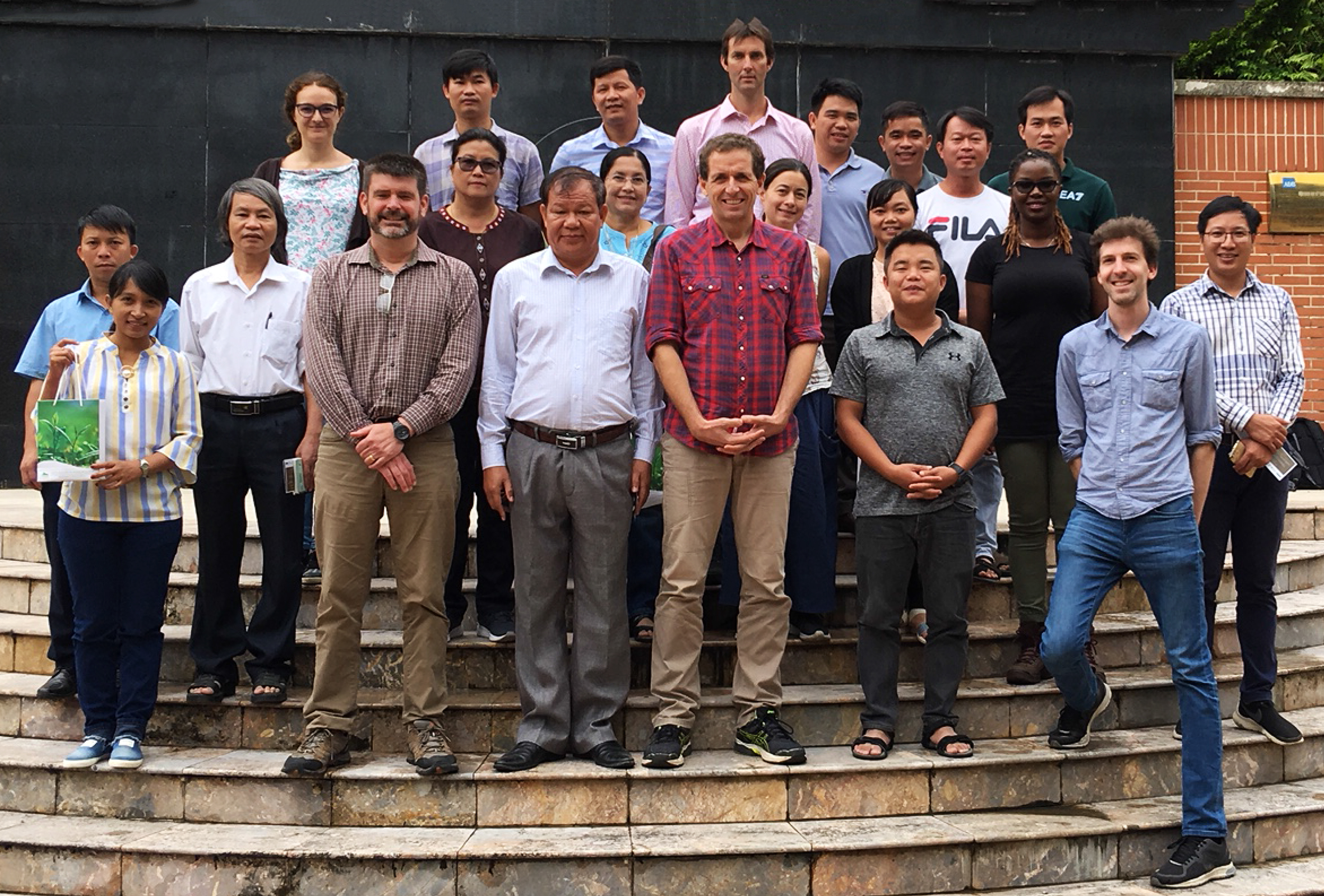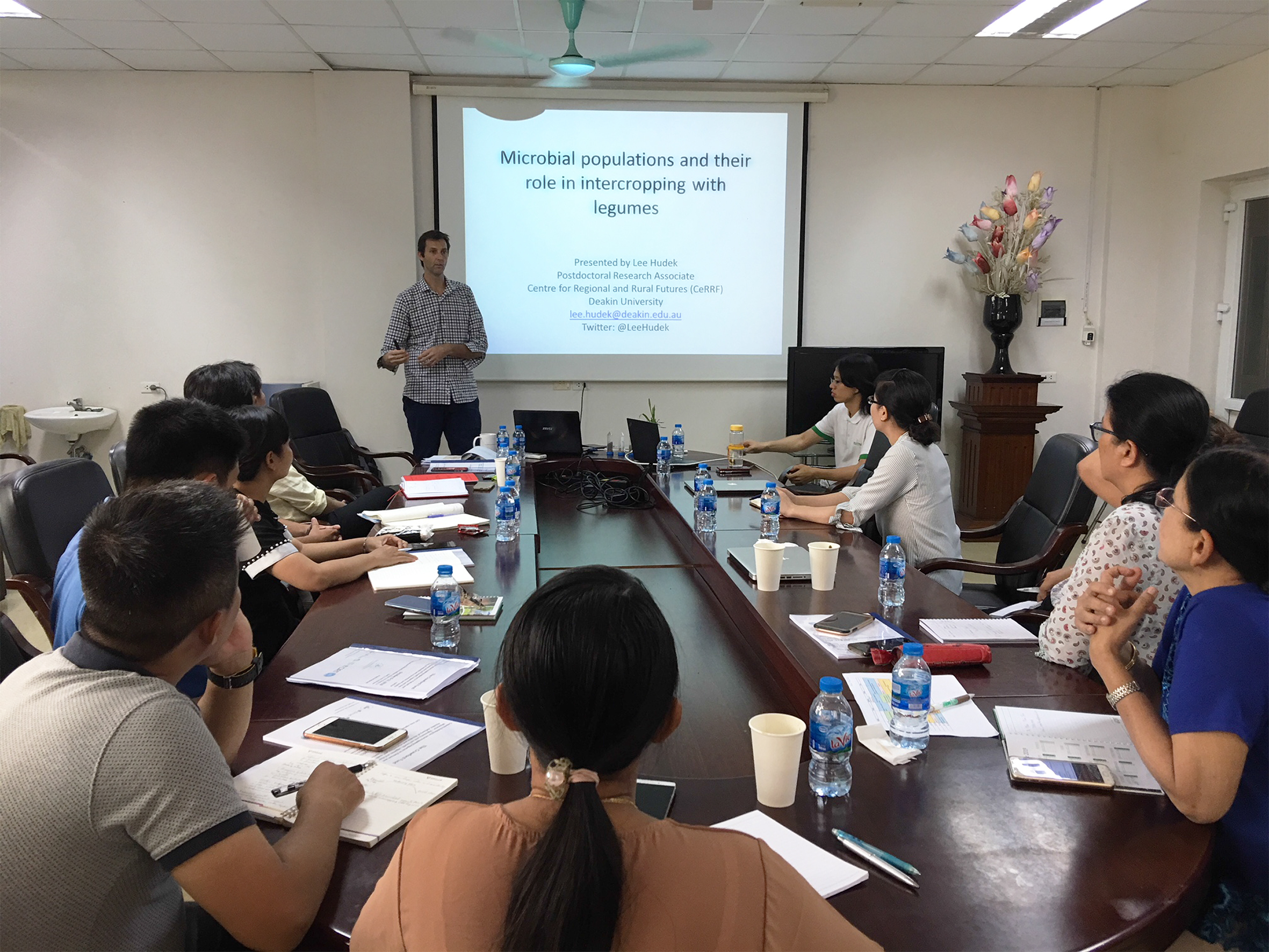

Capacity Building for Intercropping legumes in Vietnam and Myanmar
February 2, 2019
In October 2018, with thanks to the Crawford Fund, Dr Lambert Brau, Dr Didier Lesueur, Dr Lee Hudek, Wesley Webster, Dr Stella Loke (Deakin Uni), Dr Laetitia Herrmann (CIAT) and Dr Mary Atieno (CIAT) presented a five-day training course at the International Center for Tropical Agriculture (CIAT) in Hanoi, Vietnam. The main focus was on agronomy and soil health, legumes and their rhizobia, delivery of rhizobia and mycorrhiza and quality control.
This class is the first step of a longer‐term initiative to increase the knowledge of the benefits of intercropping cassava and maize with legumes. “Better soil and fertilizer management and cultivation practices can also result in higher yields and intercropping has been shown to increase crop yields and reduce input costs for farmers”, Dr Brau said.
Successful intercropping with legumes to reduce fertilizer inputs requires the application of sufficient numbers of rhizobia at the time of sowing. To date most farmers that employ intercropping as a strategy don’t inoculate their legumes, relying instead on organic or inorganic fertilizers. Legumes are highly compatible with cassava in terms of growth pattern, canopy development and nutrient demands.
Enthusiastic feedback from the participants included: “All of the lectures and presentations were very informative and I got different ideas from the practical work that we did together in the laboratory. The field trip was very good and well organised” and “As a lecturer, I found much precious knowledge and techniques for my future research.”
 Microbial products represent a relatively cheap alternative to the fertilizers, and have been shown to perform very well in different kinds of environments (including different crop types and different soil types). However, there is little information on the actual content of these products and the regulation to control their quality is globally poor.
Microbial products represent a relatively cheap alternative to the fertilizers, and have been shown to perform very well in different kinds of environments (including different crop types and different soil types). However, there is little information on the actual content of these products and the regulation to control their quality is globally poor.
“The course also showed scientists how to assess the microbial quality of commercial inoculants and to distinguish ineffective products from quality inocula in their national markets. This will allow them to use the effective ones only”, Dr Brau said.
Overall, the participants agreed that the course created a sound understanding for of better soil and fertilizer management, cultivation practices, agro‐ecology, the agronomy of intercropping legumes with cassava and maize, and principles to the design and management of sustainable agro‐ecosystems.





